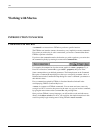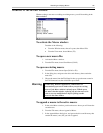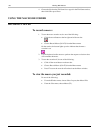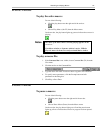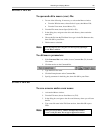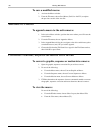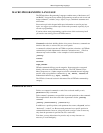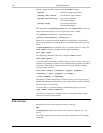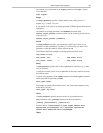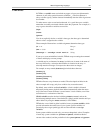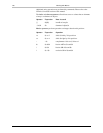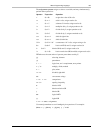
152 Working with Macros
FXDeko User’s Guide
Here are several possible variations of the justify command:
justify
default (unchanged) justification
justify left bottom
horizontal left; vertical bottom
justify vertical=top
top vertical justification;
horizontal unchanged
justify v=top
top vertical justification;
horizontal unchanged
Most parameters are optional parameters; they have default values and do not
require specification unless you are assigning new values to them.
The justify command has two optional parameters.
justify [horizontal=] [vertical=]
Brackets are a convention used throughout this manual and in on-line help to
indicate that a parameter is optional. Do not use brackets when writing an actual
macro.
A required parameter has no default value, so you must specify its value. The
file_open command is a command with a required parameter:
file_open name=
You must supply the name of the file to satisfy the name parameter:
file_open myfile
A command and its parameters normally occupy one line of a macro, and a space
separates one parameter from the next. If a command and its parameters do not fit
on one line, a backslash (\) at the end of the line indicates that the command
continues on the next line:
file_save [name=] [comment=] [type=] [number=] \
[channel=] [-all] [glyphs=] [-bitmap] \
[-auto_comment] [-compress]
Note that the second and third lines are indented. This is just a matter of good
penmanship; indentation and blank lines do not affect macro execution, but make
the macro easier to read and edit.
Use semicolons (;) to separate multiple commands that appear on one line:
type "Hello there";newline
As in the above example, if a parameter value is a string that includes a space,
enclose the value in quotation marks.
PARAMETERS
Parameters fall into several categories based on value type.
Real
A real parameter specifies any numeric value, whole or fractional, e.g. 3, 9.7, -
0.9, etc.
Very large or small real values may be expressed in exponent form. For example,
2.5e-10.



